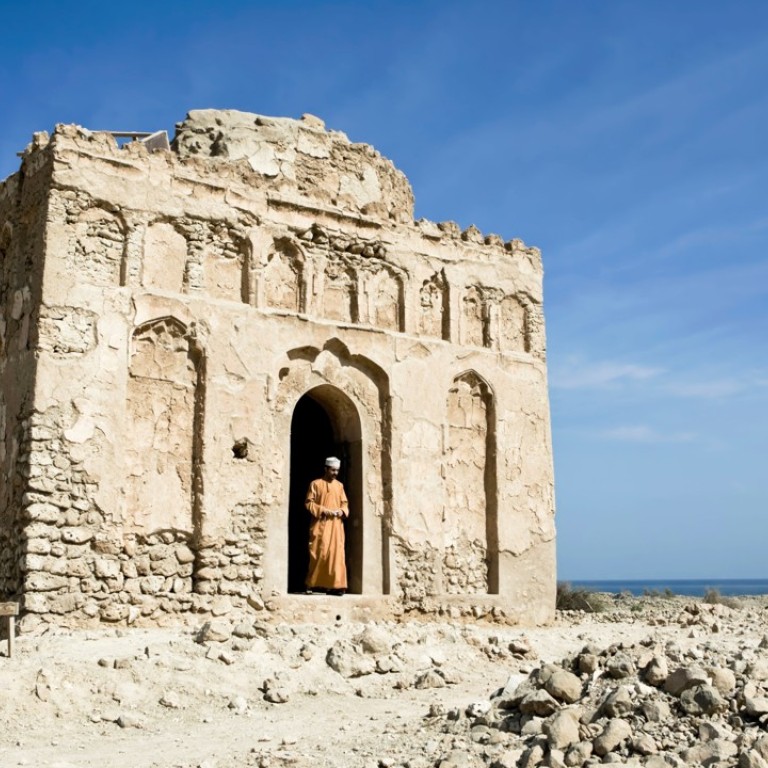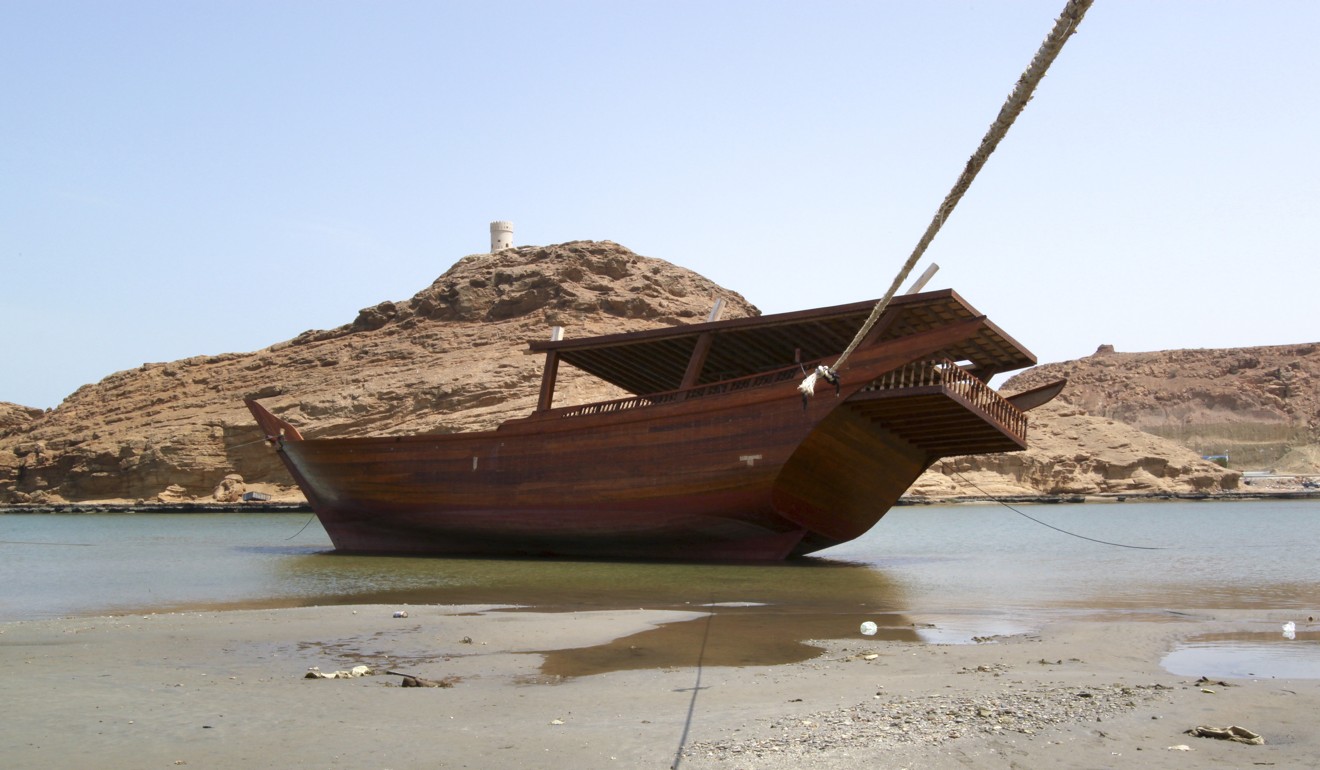
Oman’s new Unesco World Heritage Site: Qalhat, a ruined medieval port city where only one building from its ancient past still stands
Still in remarkably good condition, the tomb of a 13th-century king’s wife is all that remains in Qalhat, a previously thriving city that dealt in everything from Indian spices and Arabian horses to dates, incense and pearls.
I walk for 10 minutes in Oman’s midday heat, first across a vast, dry riverbed and then on a winding path up a hill. There are no signs, but I know what I’m looking for is here – Google Earth says it is. I reach a hilltop overlooking the Indian Ocean and there it is, surrounded by rubble: the imposing, but visibly decaying, Tomb of Bibi Maryam – the last standing evidence of the ancient city of Qalhat.
With its roof collapsed and everything around it in ruins, the tomb reminds me of other ancient monuments being reclaimed by time. The jungle-covered temple of Ta Prohm at Angkor Wat in Cambodia comes to mind, as do the earthquake-hit temples of Bagan in Myanmar. However, the Tomb of Bibi Maryam has something that neither of those tourist honeypot sites has: almost total isolation.
How to visit Asia’s new Unesco World Heritage Sites
Few have heard of Qalhat, or the Tomb of Bibi Maryam. The latter is thought to have been built either by Baha al-Din Ayaz, the 13th-century King of Hormuz, in memory of his wife Maryam, or by Maryam herself.
The ruins of a trading port that the tomb overlooks was once a major part of the Hormuz empire between the 11th and 15th centuries, and was visited by two of history’s most famous travel writers: the Moroccan traveller Ibn Battuta, and before him, Italian merchant and explorer Marco Polo on his return to Venice from Kublai Khan’s court at Xanadu in Mongolia.

So why was there no one here? The short answer is that Qalhat is a mess. The tomb, its iconic showpiece, is on a hilltop mostly covered in piles of stones, collapsed walls and rubble, with no obvious fences, gates, pathways or roads. It looks striking because there is nothing around it. There is no explanatory sign for visitors; the only evidence that anyone else has ever been here are the iron bars across the entrances to the tomb, and small fences around some objects.

In July, Unesco put Qalhat on its list of World Heritage Sites alongside four existing sites in Oman: Bahla Fort; the incredible prehistoric “beehive tombs” that dot the landscape of Bat; the frankincense trees of Wadi Dawkah; and five examples of an exquisite irrigation system dating from AD500 in the country’s north east.
Polo stopped by as he was sailing along the Omani coast in the late 13th century. In his Description of the World he wrote that “Calatu” was a strong, fortified port city where merchant ships imported spices and rice from India, and exported Arabian horses in astonishing numbers. It also dealt in dates, incense and pearls. Battuta, who visited in 1329, described “Kalhát” as having fine bazaars and one of the most beautiful mosques, the walls of which were covered with enamelled tiles.

Battuta was writing about the Tomb of Bibi Maryam. Despite having suffered an earthquake at the end of the fourteenth century, and an attack by Portuguese forces in 1508, what is left of the tomb is still in excellent condition. Somehow, decorative wall patterns of Persian and Central Asian origin and other architectural motifs have survived, while inside is a collapsed crypt, possibly containing the remains of Maryam and Baha al-Din Ayaz.
An archaeological dig has been underway in the area since 2013 that has so far has uncovered beads, bracelets and rings from India, and porcelain from China, Vietnam, Thailand and Myanmar. It has also found Qalhat’s vast inner and outer walls, the outlines of 2,800 houses, streets, marketplaces, a Great Friday Mosque, and even evidence of a hammam, an elaborate bathing house not found anywhere else in Oman.
A visitor centre and a car park are planned, and once finished, the open archaeological park of Qalhat will be well worth visiting on any trip to Oman. For now, however, it is not even the most famous attraction on Highway 17, a modern, fast and ugly road that hugs the Indian Ocean coastline on its way from the capital Muscat to the city of Sur.

For now, most tourists head just north of Qalhat to Bimmah Sinkhole – a deep natural bowl of turquoise water that doubles as a bizarre swimming pool – and Wadi Shab, a gorge that is a spectacular place to hike and go swimming. Just to the south of Qalhat, Sur is on Oman’s eastern tip, and has ancient shipyards where visitors can still see huge traditional wooden boats being built.

Getting there: Several airlines, including Cathay Pacific and Emirates, fly from Hong Kong to Muscat, Oman via Bangkok, Delhi, Dubai or Doha. Northeastern Oman is best visited from October to April to avoid the hottest part of the year.

